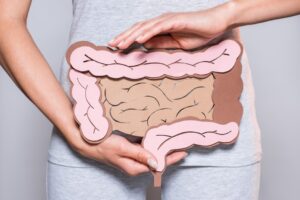The New Era of Weight Loss and Its Hidden Catch
A new class of medications has fundamentally reshaped the landscape of weight management. GLP-1 receptor agonists, known by trade names such as Ozempic and Wegovy, have demonstrated an unprecedented ability to help individuals with obesity and type 2 diabetes achieve significant weight loss. Hailed in media reports and patient testimonials, these drugs represent a monumental step forward, offering a powerful tool for a condition that has long resisted effective pharmacological intervention. The results are often dramatic, with clinical trials showing average weight loss approaching 15% of total body weight over a year—a figure that rivals the outcomes of some bariatric surgeries.
This success, however, has cast a shadow that is only now coming into sharp focus. The number on the bathroom scale, long the primary metric of weight loss success, tells an incomplete and potentially misleading story. While these drugs are exceptionally effective at reducing pounds, a significant portion of that loss is not from fat tissue but from lean body mass—a category that includes vital, metabolically active muscle. This unintended consequence gives rise to a critical and underappreciated issue: the Ozempic Paradox. Patients may be losing substantial weight and improving certain metabolic markers like blood sugar, yet they may simultaneously be compromising a cornerstone of their long-term health: their cardiorespiratory fitness.
The public conversation has been overwhelmingly focused on the quantity of weight lost, creating a dangerous blind spot regarding the quality of that loss. This report seeks to correct that narrative. The critical question is not just how much weight is lost, but what kind of weight is lost. Research increasingly shows that cardiorespiratory fitness, a measure of how well the body can use oxygen during exercise, is a more powerful predictor of longevity than body weight or Body Mass Index (BMI) alone. Therefore, a treatment that reduces weight but fails to improve—or potentially even worsens—this key health metric may be trading a short-term victory on the scale for a long-term health risk. This report will explore this paradox in depth, examining the physiological mechanisms at play and providing a comprehensive, evidence-based roadmap to navigate this new terrain, ensuring that weight loss translates into genuine, sustainable, and functional health.
The Science of Semaglutide: How GLP-1s Remodel the Body
To understand why GLP-1 receptor agonists have such a profound effect on body composition, it is essential to first understand their mechanism of action. These drugs, including the active ingredient semaglutide, are not traditional diet pills that aim to artificially boost metabolism. Instead, they are synthetic versions of a naturally occurring hormone called glucagon-like peptide-1 (GLP-1), an incretin hormone that the gut releases in response to eating. By mimicking and amplifying the effects of this natural hormone, these medications orchestrate a multi-pronged effect on the body’s energy regulation systems.
The primary actions of GLP-1 agonists occur along three distinct pathways:
- The Brain (Appetite Suppression): The drugs cross the blood-brain barrier and act directly on receptors in the brain, particularly in the hypothalamus, which is the body’s primary control center for hunger and satiety. This action significantly increases the feeling of fullness and reduces the sensation of hunger, leading to a natural and substantial decrease in food cravings and overall appetite.
- The Stomach (Delayed Gastric Emptying): The medications slow the rate at which the stomach empties its contents into the small intestine. This physiological braking mechanism prolongs the feeling of fullness after a meal, further contributing to reduced calorie consumption throughout the day.
- The Pancreas (Glucose Regulation): In a glucose-dependent manner, GLP-1 agonists stimulate the pancreas to release insulin and simultaneously inhibit the release of glucagon, a hormone that raises blood sugar. This dual action is highly effective for managing blood sugar levels in individuals with type 2 diabetes.
The combination of these effects results in a powerful and sustained caloric deficit. Patients simply feel less hungry and are satisfied with smaller portions, leading them to consume fewer calories without the constant, conscious struggle associated with traditional dieting. It is this profound reduction in energy intake that drives the significant weight loss observed in clinical trials.
However, the very efficacy of this mechanism is also its primary liability when it comes to preserving muscle mass. A large and rapid caloric deficit, particularly when not accompanied by specific countermeasures, signals to the body that it is in a state of energy crisis. In response, the body does not discriminate perfectly between energy stores; it draws not only from adipose (fat) tissue but also breaks down metabolically active muscle tissue in a process known as catabolism to meet its energy needs. Furthermore, the potent appetite suppression can make it behaviorally challenging for patients to consume the necessary amount of dietary protein, the essential building block for muscle repair and maintenance. This creates a perfect storm where the body is both biologically primed to break down muscle and behaviorally hindered from consuming the nutrients needed to protect it.
The Unintended Consequence: Quantifying Lean Mass Loss
Anecdotal reports from patients feeling that “muscle was slipping away from them” are substantiated by rigorous clinical data. The most definitive evidence comes from the STEP 1 (Semaglutide Treatment Effect in People with Obesity) trial, a landmark study published in The New England Journal of Medicine. This 68-week, double-blind, randomized controlled trial provided a detailed look at the body composition changes induced by semaglutide.
In a sub-study of the trial that used Dual-Energy X-ray Absorptiometry (DXA) scans—the gold standard for measuring body composition—researchers quantified the changes in both fat mass and lean body mass. The results were striking. Participants taking semaglutide lost an average of 17.3 kg (approximately 38 pounds) of total body weight. However, of that total, an average of 6.9 kg (15.1 pounds) was a reduction in lean mass. This means that a staggering 40% of the total weight lost%20during%20treatment.) came from lean tissue, not fat. By comparison, individuals in the placebo group lost only 2.7 kg (6 pounds) in total, with just 1.5 kg (3.3 pounds) of that being lean mass.
This phenomenon is not unique to semaglutide. A similar analysis of tirzepatide (the active ingredient in Mounjaro and Zepbound), a dual GIP and GLP-1 receptor agonist, found that lean mass accounted for approximately 25% of the total weight lost—a lower but still significant proportion. While any form of weight loss, including through diet and exercise alone, typically results in some loss of lean mass—often cited as being around 25% of total weight loss—the 40% figure from the STEP 1 trial suggests that GLP-1-induced weight loss may accelerate this undesirable outcome.
Some analyses have pointed out that because the loss of fat mass is so substantial, the proportion of lean mass relative to total body weight can actually increase slightly. For instance, in the STEP 1 trial, the average participant’s body composition shifted from 53.9% lean mass at baseline to nearly 57% at the end of the trial. While mathematically correct, this perspective obscures the more critical clinical issue: the absolute loss of functional, metabolically active tissue. A smaller body with a slightly higher percentage of muscle is not necessarily healthier if the total amount of muscle has been significantly diminished, compromising strength, metabolic rate, and cardiorespiratory capacity.
| Treatment Group | Mean Change in Body Weight (kg) | Mean Change in Fat Mass (kg) | Mean Change in Lean Mass (kg) | Lean Mass as % of Total Weight Loss | |
| Semaglutide | -17.3 | -10.4 | -6.9 | ~40% | |
| Placebo | -2.7 | -1.2 | -1.5 | ~56% | |
| Data from the 68-week STEP 1 trial sub-study using DXA scans. Note that the higher percentage of lean mass loss in the placebo group is relative to a much smaller total weight loss. |
The Cardiorespiratory Fitness Deficit
The loss of significant muscle mass leads directly to the central paradox of these weight-loss drugs: a disconnect between weight reduction and improvements in cardiorespiratory fitness (CRF). CRF is considered by many exercise physiologists and cardiologists to be one of the most powerful predictors of long-term health and longevity. The gold-standard measure for CRF is maximal oxygen uptake, or VO2 max. This metric quantifies the maximum volume (V) of oxygen (O2) the body can effectively import, transport, and utilize during intense exercise. It is a single, powerful number that reflects the integrated performance of the cardiovascular, respiratory, and musculoskeletal systems.
The importance of VO2 max cannot be overstated. A robust body of scientific literature has established that a higher VO2 max is strongly and independently associated with a lower risk of all-cause mortality and death from cardiovascular disease. In a landmark analysis involving nearly 400,000 individuals, researchers at the University of Virginia (UVA) Health found that CRF was a(https://news.virginia.edu/content/glp-1-drugs-fail-provide-key-weight-loss-benefit). As lead researcher Siddhartha Angadi, Ph.D., a cardiovascular exercise physiologist, stated, “Cardiorespiratory fitness is a potent predictor of all-cause and cardiovascular mortality risk… In fact, once CRF was factored in, body weight failed to predict the risk of mortality”.
This is precisely where the benefits of GLP-1 agonists fall short. In a recent review paper, the same UVA Health research team analyzed the existing data on GLP-1 drugs and their effect on CRF. They found that despite producing substantial weight loss and improving some measures of heart function, these medications showed(https://news.virginia.edu/content/uva-researchers-find-weight-loss-drugs-dont-substantially-improve-fitness).
The physiological reason for this disconnect is straightforward. Muscles are the primary sites of oxygen consumption during physical activity. A higher muscle mass provides a larger “engine” to utilize the oxygen delivered by the heart and lungs. When a significant amount of this metabolically active tissue is lost, the body’s overall capacity to use oxygen is compromised, leading to a stagnant or even declining VO2 max, even as total body weight decreases. This creates a concerning clinical scenario where patients and their doctors may be lulled into a false sense of security. The number on the scale is moving in the right direction, and metrics like blood pressure and blood sugar may be improving, but a vital biomarker of long-term survival and functional capacity is failing to keep pace. Patients are becoming lighter, but not necessarily fitter.
Muscle as the Metabolic Engine: The Risks of Sarcopenic Obesity
Skeletal muscle is far more than a structural component for movement; it is the body’s largest metabolic organ and a critical regulator of systemic health. Muscle tissue is the primary site for insulin-mediated glucose disposal, meaning it plays an essential role in clearing sugar from the bloodstream and preventing insulin resistance. Furthermore, muscle is a major determinant of an individual’s resting metabolic rate (RMR)—the number of calories the body burns at rest. The more muscle mass a person has, the(https://health.ucdavis.edu/sports-medicine/resources/dxa-info).
The progressive loss of muscle mass and function, a condition known as sarcopenia, is a hallmark of aging but can be accelerated by disease, inactivity, and rapid weight loss. The health consequences of sarcopenia are severe and wide-ranging:
- Metabolic Slowdown: A reduction in muscle mass directly lowers the RMR. This means the body requires fewer calories to maintain its weight, making it significantly easier to regain lost weight once a weight-loss intervention ends.
- Impaired Glucose Control: With less muscle tissue available to absorb glucose, the risk of developing insulin resistance and type 2 diabetes increases. This is particularly paradoxical for GLP-1 agonists, as one of their primary therapeutic goals is to improve glycemic control.
- Functional Decline and Frailty: Sarcopenia leads to a loss of strength, stamina, and balance, which severely impacts quality of life. It increases the risk of falls and fractures, can lead to a loss of independence, and is a major contributor to frailty, especially in older adults.
Weight loss from GLP-1 agonists, without a concurrent strategy to preserve muscle, can inadvertently push individuals toward a high-risk condition known as “sarcopenic obesity.” This is a state characterized by low muscle mass in the presence of high body fat. A person with sarcopenic obesity may have a “normal” BMI but still face the elevated metabolic and functional risks associated with both sarcopenia and obesity.
This dynamic creates a biological trap for weight regain. A patient begins treatment with a certain RMR. They take a GLP-1 agonist, lose a significant amount of weight, including a substantial portion of muscle, which in turn(https://stpetersburgnutrition.com/the-most-effective-strategies-for-weight-loss-and-weight-maintenance/). If they eventually stop the medication, their pharmacologically suppressed appetite returns to its natural baseline. They are now faced with a normal or even heightened sense of hunger but a slower, less efficient metabolic engine. This mismatch creates a powerful biological pressure for rapid fat regain, potentially leaving them in a worse metabolic state than before they started treatment.
A Proactive Defense: A Two-Pillar Strategy for Muscle Preservation
The challenges posed by GLP-1-associated muscle loss are significant, but they are not insurmountable. The solution requires a paradigm shift in how this form of weight loss is managed, moving from a passive reliance on the medication to a proactive and integrated approach. This defense is built upon two synergistic and non-negotiable pillars: strategic nutrition and targeted resistance training.
Nutrition, specifically a high-protein diet, provides the essential building blocks—amino acids—that the body needs to repair and maintain muscle tissue, especially during a caloric deficit. However, these building blocks will not be used effectively without a clear signal that they are needed. That signal is the stimulus provided by resistance training. Lifting weights or performing other forms of strength exercise tells the body that its muscle mass is vital and must be preserved, prompting it to utilize the available protein for muscle maintenance rather than breaking down existing tissue for energy. Neither pillar is sufficient on its own; they must be implemented together to effectively counteract the catabolic pressures of rapid weight loss.
Pillar 1: Strategic Nutrition to Fuel and Preserve Muscle
During a state of caloric deficit, the body is actively searching for energy sources. If dietary protein intake is inadequate, it will turn to the most readily available protein reserve: skeletal muscle. To prevent this, it is crucial to consume a diet rich in high-quality protein, providing a constant supply of amino acids for muscle protein synthesis.
The standard Recommended Dietary Allowance (RDA) for protein is 0.8 grams per kilogram (g/kg) of body weight, but this is the minimum required to prevent deficiency in a sedentary individual at energy balance. For an individual in a significant caloric deficit who is trying to preserve muscle mass, this amount is insufficient. Evidence-based guidelines for muscle preservation during weight loss recommend a much higher intake, typically ranging from 1.2 to 1.6 g/kg of body weight, and some recommendations go as high as 2.2 g/kg. For a 200-pound (91 kg) individual, this translates to a target of 110-145 grams of protein per day.
Achieving this target can be challenging, especially when appetite is suppressed by medication. Therefore, the strategy must be deliberate:
- Distribute Protein Intake: Spreading protein consumption throughout the day in doses of 20-40 grams per meal has been shown to be more effective for stimulating muscle protein synthesis than consuming the majority of protein in a single meal.
- Prioritize High-Quality Sources: Focus on complete proteins that contain all essential amino acids. Lean meats, poultry, fish, eggs, and dairy products are excellent animal-based sources. For those following a plant-based diet, soy products, lentils, chickpeas, and quinoa are effective options.
- Utilize Supplements: When appetite is low, protein supplements such as whey, casein, or plant-based protein powders can be an invaluable and convenient tool to meet daily targets without the volume of whole foods.
| Food Source | Serving Size | Protein (grams) | |
| Lean Meats | |||
| Chicken Breast (cooked) | 3 oz (85 g) | ~25 | |
| Turkey Breast (cooked) | 3 oz (85 g) | ~25 | |
| Fish | |||
| Salmon (cooked) | 3 oz (85 g) | ~22 | |
| Tuna (canned, in water) | 3 oz (85 g) | ~20 | |
| Dairy & Eggs | |||
| Greek Yogurt (plain, nonfat) | 1 cup (227 g) | ~23 | |
| Cottage Cheese (low fat) | 1 cup (226 g) | ~28 | |
| Large Egg | 1 whole | ~6 | |
| Plant-Based | |||
| Tofu (firm) | 3 oz (85 g) | ~8 | |
| Lentils (cooked) | 1 cup (198 g) | ~18 | |
| Edamame (shelled, cooked) | 1 cup (155 g) | ~17 | |
| Supplements | |||
| Whey Protein Powder | 1 scoop (~30 g) | ~20-25 | |
| Protein content can vary by brand and preparation method. |
Pillar 2: Resistance Training to Stimulate Muscle Retention
While adequate protein intake provides the necessary raw materials, resistance training provides the essential anabolic stimulus that signals the body to use those materials for muscle maintenance and growth. In the absence of this stimulus, even a high-protein diet may not be sufficient to fully prevent muscle loss during a significant caloric deficit.
While all forms of exercise are beneficial for overall health, resistance training is uniquely effective for preserving lean mass. Aerobic exercise, such as running or cycling, is excellent for improving cardiovascular health and burning calories, but it does not provide the same potent signal for muscle preservation as challenging the muscles against resistance. The mechanical tension placed on muscles during strength training triggers a cascade of physiological responses that promote the repair and growth of muscle fibers.
A well-structured resistance training program for individuals on GLP-1 agonists should be both effective and accessible, particularly for those new to exercise. Key recommendations include:
- Frequency: Aim for a minimum of two to three full-body resistance training sessions per week%20during%20treatment.) on non-consecutive days to allow for adequate recovery.
- Focus on Compound Movements: Prioritize exercises that engage multiple large muscle groups simultaneously. These movements are more time-efficient and have a greater metabolic impact than isolation exercises. Key compound movements include squats, lunges, deadlifts (or variations), push-ups, and rows.
- Progressive Overload: To continue stimulating the muscles, the training must become progressively more challenging over time. This can be achieved by gradually increasing the weight lifted, the number of repetitions or sets performed, or by decreasing rest times between sets.
| Day 1: Full Body A | Day 2: Rest or Active Recovery (e.g., Walking) | Day 3: Full Body B | Day 4: Rest or Active Recovery | Day 5: Full Body C | Day 6 & 7: Rest or Active Recovery | |
| Goblet Squats: 3 sets of 8-12 reps | Romanian Deadlifts: 3 sets of 10-15 reps | Lunges: 3 sets of 10-12 reps per leg | ||||
| Push-ups (or Knee Push-ups): 3 sets to failure | Dumbbell Bench Press: 3 sets of 8-12 reps | Overhead Press: 3 sets of 8-12 reps | ||||
| Dumbbell Rows: 3 sets of 10-15 reps per arm | Lat Pulldowns (or Band Pulldowns): 3 sets of 10-15 reps | Seated Cable Rows: 3 sets of 10-15 reps | ||||
| Plank: 3 sets, hold for 30-60 seconds | Leg Raises: 3 sets of 15-20 reps | Glute Bridges: 3 sets of 15-20 reps | ||||
| This is a sample beginner routine. Exercises, sets, and reps should be adjusted based on individual fitness level and access to equipment. |
Beyond the Scale: The Imperative of Monitoring Body Composition
To effectively manage the Ozempic Paradox, a fundamental shift in how success is measured is required. Relying solely on the bathroom scale or BMI is insufficient and can be dangerously misleading. These metrics do not distinguish between fat mass and lean mass, and therefore cannot capture the critical changes in body composition that are occurring. A patient could, for example, maintain the same total body weight while losing muscle and gaining fat—a scenario that represents a decline in health but would be invisible on a standard scale.
To navigate weight loss safely and effectively while using GLP-1 agonists, it is imperative to utilize more sophisticated tools that can accurately track body composition.
- (https://health.ucdavis.edu/sports-medicine/resources/dxa-info): Considered the clinical gold standard, a DEXA scan uses low-dose X-rays to provide a precise and detailed breakdown of bone mineral density, fat mass, and lean body mass. Regular DEXA scans (e.g., at baseline and every 3-6 months during therapy) can provide an objective measure of whether muscle mass is being preserved.
- (https://en.wikipedia.org/wiki/Bioelectrical_impedance_analysis): While less precise than DEXA, BIA is a more accessible and affordable method. BIA scales and handheld devices work by sending a weak, imperceptible electrical current through the body and measuring the opposition (impedance). Because fat, muscle, and water conduct electricity differently, the device can use this information to estimate body composition percentages. While not as accurate for a single measurement, BIA is useful for tracking trends over time.
Adopting these tools facilitates a crucial psychological and clinical reframing of the weight loss journey. The goal shifts from simply “losing pounds” to the more sophisticated and health-promoting objective of “losing fat while maintaining or building muscle.” This new definition of success aligns directly with the behavioral changes—prioritizing protein and engaging in resistance training—that are essential for achieving positive long-term outcomes. It creates a virtuous cycle where the method of measurement reinforces the very habits that lead to a truly healthier and more functional body.
Conclusion and Recommendations: Redefining Success for a Healthier Future
The advent of GLP-1 receptor agonists marks a transformative moment in medicine, offering a powerful tool against the complex and persistent challenges of obesity and type 2 diabetes. However, their profound efficacy in inducing weight loss has unveiled a new, equally complex challenge: ensuring that this weight loss is healthy, functional, and sustainable. The Ozempic Paradox—the disconnect between substantial weight loss and a lack of improvement in cardiorespiratory fitness—highlights the critical danger of losing significant muscle mass. This loss not only compromises a key predictor of longevity but also lowers the metabolic rate and increases the risk of functional decline and frailty.
To navigate this paradox, the approach to treatment must evolve. GLP-1 therapy should not be viewed as a passive cure but as an active partnership that requires a holistic and proactive strategy. The following recommendations are essential for patients and clinicians to maximize the benefits and mitigate the risks of these medications:
- Redefine the Goal: The primary objective of treatment should be shifted from simple weight loss to healthy body recomposition. Success should be defined not by the number on the scale, but by the reduction of fat mass while preserving or increasing lean muscle mass.
- Implement the Two Pillars: A comprehensive treatment plan must be built upon the two non-negotiable pillars of muscle preservation:
- Strategic High-Protein Nutrition: Patients should be counseled on the importance of consuming 1.2-1.6 grams of protein per kilogram of body weight daily, distributed across several meals, to provide the necessary building blocks for muscle maintenance.
- Consistent Resistance Training: A structured program of resistance exercise, performed at least two to three times per week, is essential to provide the anabolic stimulus required to signal muscle preservation.
- Monitor Body Composition: Reliance on BMI and scale weight should be replaced or supplemented with regular monitoring of body composition through methods like DEXA or BIA scans. This provides the objective data needed to track the quality of weight loss and adjust strategies accordingly.
- Adopt a Long-Term Perspective: GLP-1 agonists can be a powerful catalyst for change, but long-term health is determined by the sustainable habits built during treatment. The ultimate goal is not merely to become a lighter version of oneself, but a stronger, fitter, and more resilient version, capable of maintaining health and vitality long after the initial weight loss is achieved. By integrating medication with expert-guided nutrition, structured exercise, and proper health monitoring, patients can truly leverage this medical breakthrough to build a healthier and more functional future.





